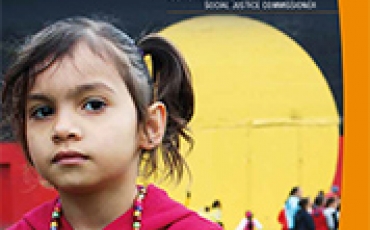Social Justice Report 2008
Archived
You are in an archived section of the website. This information may not be current.
This page was first created in December, 2012
Social Justice Report 2008
Contents
- Recommendations
- Chapter 1: Introduction
- Chapter 2: The United Nations Declaration on the Rights of Indigenous Peoples: a framework for Australian Indigenous rights protection
- Chapter 3: Remote Indigenous Education
- Chapter 4: Beyond the Apology - an agenda for healing
- Chapter 5: Progress towards achieving Aboriginal and Torres Strait Islander health equality within a generation – an update on efforts to ‘Close the Gap’
- Appendix 1: Chronology of events relating to the administration of Indigenous affairs, 1 July 2007 – 30 June 2008
- Appendix 2: A statistical overview of Aboriginal and Torres Strait Islander peoples in Australia
- Appendix 3: National Aboriginal and Torres Strait Islander Education Policy
- Appendix 4: ‘Accessible’ and ‘available’
- About the report & Credits
Downloads
Also see
Transmittal Letter
6 February 2009
The Hon Robert McClelland MP
Attorney General
Parliament House
Canberra ACT 2600
Dear Attorney,
I am pleased to present to you the Social Justice Report 2008.
The report is provided in accordance with section 46C (1) (a) of the Human Rights and Equal Opportunity Commission Act 1986. This provides that the Aboriginal and Torres Strait Islander Social Justice Commissioner is to submit a report regarding the enjoyment and exercise of human rights by Aboriginal persons and Torres Strait Islanders, and including recommendations as to the action that should be taken to ensure the exercise and enjoyment of human rights by those persons.
The report’s lead chapter outlines reform measures for the protection of Indigenous peoples’ rights. This chapter provides a foundational agenda for the future promotion and protection of Indigenous rights. Chapter 3 reviews the provision of education services in remote Australia with specific focus on the availability and accessibility of education services for Indigenous preschool, primary and secondary school students. Chapter 4 overviews the needs for Indigenous healing and what can be done to support and advance an agenda for healing. Chapter 5 concludes with a review of progress made in addressing Indigenous health inequality since 2005, and identifies future measures required to consolidate and advance the current gains.
Appendix 1 provides a chronology of events for 2007–2008. Appendix 2 provides an updated statistical profile of Indigenous Australians. Appendices 3 and 4 provide information pertaining to Chapter 3 on remote Indigenous education.
The report includes 15 recommendations for government in the areas of Indigenous human rights protection, remote Indigenous education and Indigenous healing; and one follow-up action for the Aboriginal and Torres Strait Islander Social Justice Commissioner on a new National Indigenous Representative Body.
I look forward to discussing the report with you.
Yours sincerely
Tom Calma
Aboriginal and Torres Strait Islander Social Justice Commissioner




